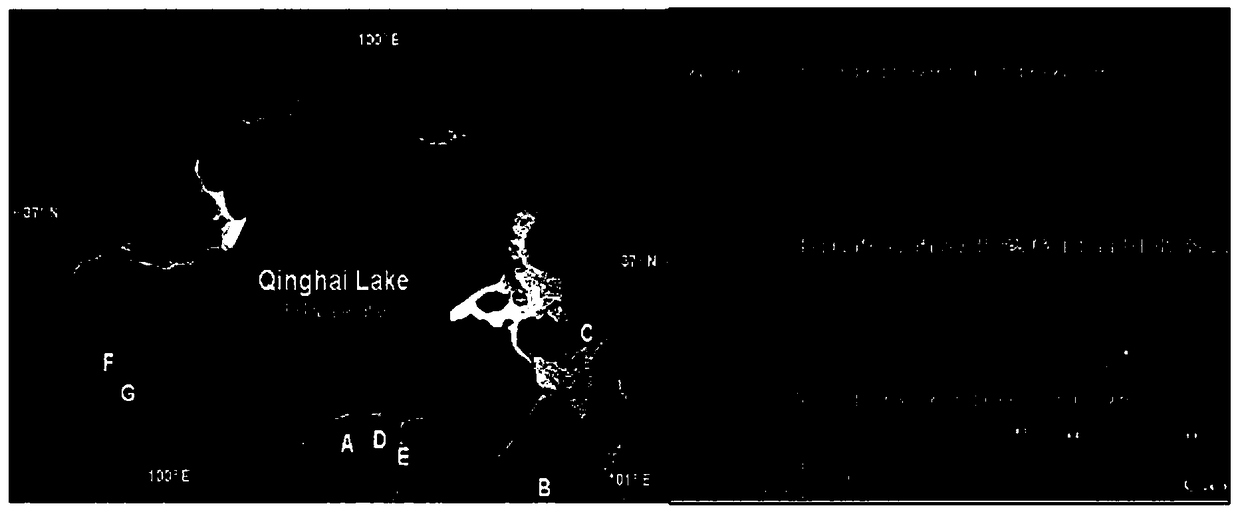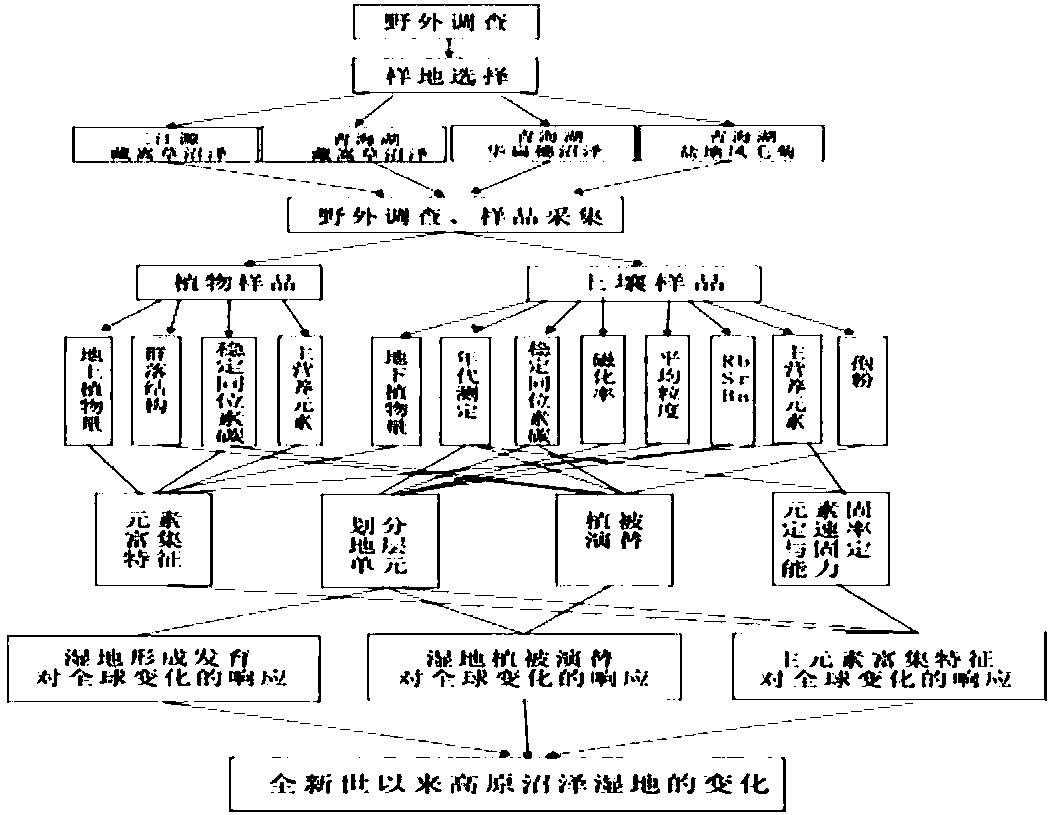A research method of alpine marsh wetland
A technology of wetlands and swamps, applied in the field of ecology, can solve the problems of lack of systematic research on gleation swamps, lack of high-resolution environmental change historical records, etc.
- Summary
- Abstract
- Description
- Claims
- Application Information
AI Technical Summary
Problems solved by technology
Method used
Image
Examples
Embodiment 1
[0029] Embodiment 1 (establishment sediment age scale)
[0030] Overview of the research area: The typical alpine swamp meadows were selected in Dawutan, Guoluo Prefecture, located in the central and eastern part of the Qinghai-Tibet Plateau, and in the Qinghai Lake Basin in the northeast. Sanjiangyuan alpine marsh wetlands such as figure 2 As shown, the region has a plateau cold climate, and the main vegetation types are alpine meadow, alpine shrub and swampy meadow. The soil is alpine meadow soil, alpine shrub meadow soil and swamp soil. The geographical location is 34°27.821′ north latitude and 100°12.367′ east longitude. Qinghai Lake Swamp Wetland is located in Gangcha County on the north bank of Qinghai Lake. Three typical wetlands are selected along the Yikewulan River, such as image 3 shown. A total of four sample plots were selected, and the latitude and longitude of the sample plots are shown in Table 1.
[0031] Sampling method: In August 2010, the community su...
Embodiment 2
[0055] Embodiment 2 (determining environment proxy index)
[0056] Basis and experimental method for interpreting paleoenvironment by environmental proxy indicators:
[0057] (1) Stable isotopes of organic matter (δ 13 C): After the whole plant sample is dried naturally, it is ground to 100 mesh, and it is burned in oxygen to generate CO by combustion method. 2 . CO 2 The carbon isotopic composition (δ 13 C) It was carried out on a MAT-251 mass spectrometer, the standard used was PDB, and the measurement error was 13 C=[R sample / R standard-1]×1000; among them, R is 13 C / 12 The relative ratio of C, R standard value is the carbon isotope ratio of the international standard material PDB. The relative error of the experimental analysis results is ±0.11‰.
[0058](2) Magnetic susceptibility (MS) and particle size: The determination of magnetic susceptibility and particle size was completed in the Environmental Magnetic Laboratory of the Key Laboratory of Western Environment...
Embodiment 3
[0109] Embodiment 3 (determining the evolution process of ancient vegetation)
[0110] In this example, pollen analysis is used as a means to study the evolution history of paleoclimate and paleoenvironment in the Sanjiangyuan and Qinghai Lake areas since the Holocene.
[0111] Sporopollen extraction method: This article uses the heavy liquid extraction method, and the specific steps are as follows:
[0112] 1) weighing. According to the lithological characteristics of the sample, it was weighed after drying at low temperature.
[0113] 2) Place the samples in a 500ml beaker, add 1 piece of Lycopodium spores to each sample (each piece contains about 27637 Lycopodium spores).
[0114] 3) Add hydrochloric acid. Add 10% dilute hydrochloric acid to the sample to remove carbonate and calcium cement in the sample. Add hydrochloric acid until there is too much hydrochloric acid until no foaming occurs (when adding acid, add it slowly and in small amounts, and then continue to add...
PUM
 Login to View More
Login to View More Abstract
Description
Claims
Application Information
 Login to View More
Login to View More - R&D
- Intellectual Property
- Life Sciences
- Materials
- Tech Scout
- Unparalleled Data Quality
- Higher Quality Content
- 60% Fewer Hallucinations
Browse by: Latest US Patents, China's latest patents, Technical Efficacy Thesaurus, Application Domain, Technology Topic, Popular Technical Reports.
© 2025 PatSnap. All rights reserved.Legal|Privacy policy|Modern Slavery Act Transparency Statement|Sitemap|About US| Contact US: help@patsnap.com



